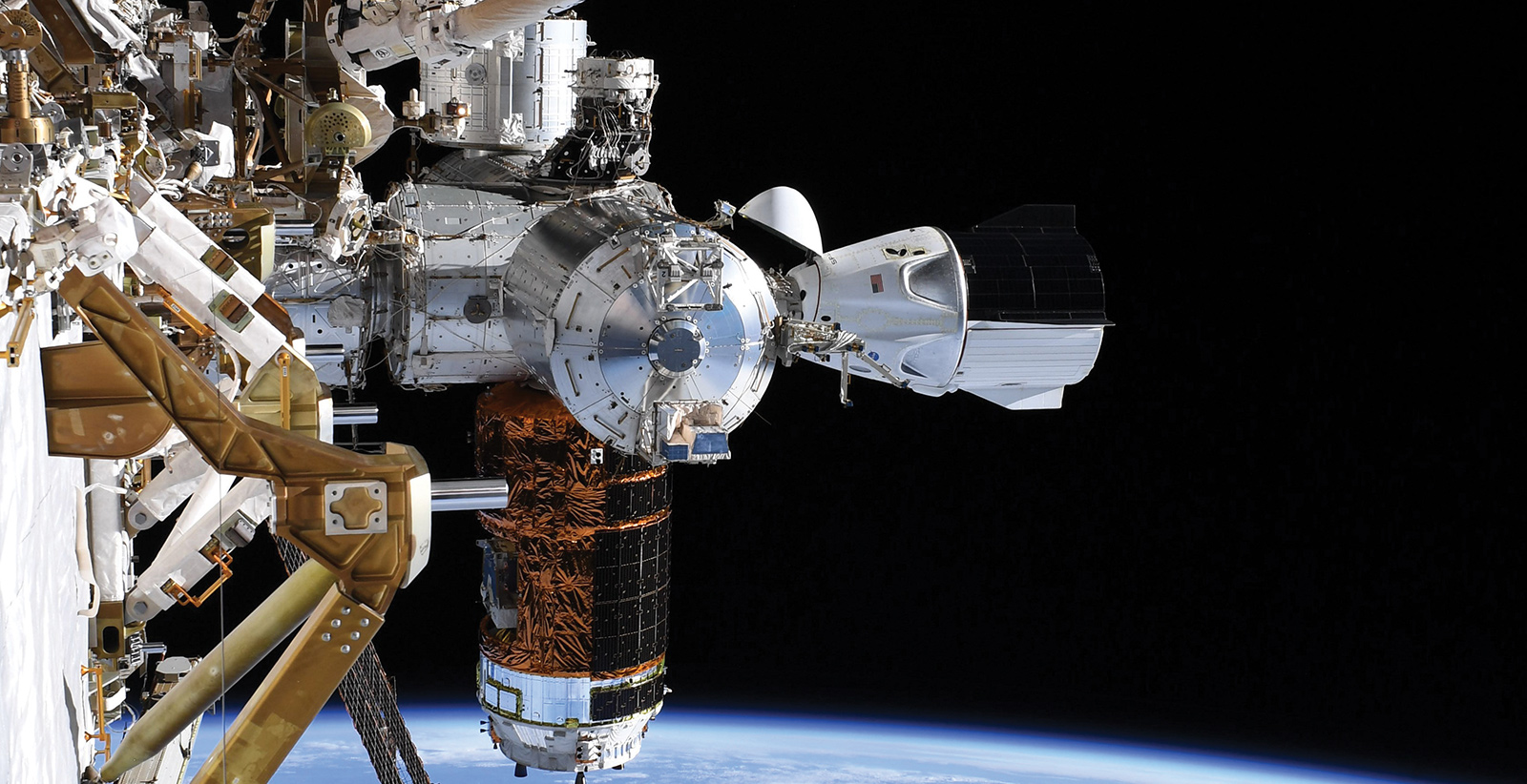Stay Up to Date
Submit your email address to receive the latest industry and Aerospace America news.
The Space Logistics Technical Committee fosters development of integrated space logistics capabilities that enable safe, affordable and routine spacefaring operations.
SpaceX became the first private company to take humans into orbit with the Crew Dragon Demo-2 mission in May. The capsule carrying NASA astronauts Bob Behnken and Doug Hurley was launched on a Falcon 9 rocket from the Kennedy Space Center in Florida to the International Space Station. The mission ended the demonstration of SpaceX’s crew transportation system and started a new era of human spaceflight in which commercial rockets can transport humans to low-Earth
orbit from U.S. soil. In August, the capsule returned to Earth after additional habitability tests, setting up November’s launch of the Crew-1 mission.
In work beyond Earth’s orbit, NASA selected SpaceX in March as the first U.S. commercial provider for the Gateway Logistics Services contract to deliver cargo, experiments and supplies for NASA’s Lunar Orbital Platform-Gateway. In September, NASA released its plan to land the first woman and next man on the moon by 2024 as part of the Artemis program. Gateway, a significant component of Artemis, will be a strategic staging point for deep-space exploration.
U.S. companies Blue Origin, Alabama-based Dynetics and SpaceX are also contributing to Artemis. In April, NASA awarded the companies contracts valued at $967 million to develop human-rated lunar landers. In May, Pennsylvania-based Astrobotic — another U.S. company contributing under the CLPS initiative — was awarded $199.5 million to deliver NASA’s new Volatiles Investigating Polar Exploration Rover, or VIPER, which could be the first U.S. rover on the moon since the Apollo 17 lander in 1972. VIPER is part of the first wave of ground truth missions intended to determine if the water resources on the moon are sufficient and capable of being mined economically. In July, NASA and the Japanese government affirmed international collaboration for the lunar Gateway by signing the Joint Exploration Declaration of Intent, reflecting future cooperation and partnership in space exploration between the two countries.
More historic firsts included the U.S. Space Force’s first space launch in March, delivering an Advanced Extremely High Frequency-6 communications satellite to orbit onboard a United Launch Alliance Atlas V rocket from Cape Canaveral Air Force Station in Florida. The Space Force became an official military branch in December 2019.
After a 328-day mission aboard ISS, NASA astronaut Christina Koch set the record for the longest single spaceflight by a woman. Koch completed 5,248 orbits, equivalent to roughly 291 trips to the moon and back, and she participated in experiments that will provide insights to the effects of long-duration spaceflight on a woman.
In academia, the Space Systems Optimization Group at Georgia Tech in May published a paper detailing its novel semi-analytical model for robotic on-orbit servicing. The work — supported in part by DARPA — responds to the growing demand for robotic on-orbit servicing for future sustainable space exploration. Also, the Massachusetts Institute of Technology developed a new framework for optimal planning of space mission campaigns for asteroid deflection under epistemic uncertainty for Earth-crossing asteroids that are highly ranked on the Palermo scale. This work — supported in part by NASA, Draper and the Samsung Foundation of Culture — brings in a new way to take advantage of the space logistics and mission design research to ensure the safety of Earth.
Contributors: Robert Shishko and Olivier de Weck
Related Posts
Stay Up to Date
Submit your email address to receive the latest industry and Aerospace America news.




